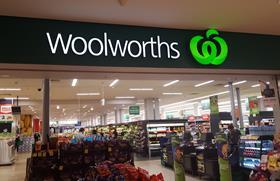
Woolworths has announced 100 per cent of its supermarkets now have an active food waste diversion programme in place.
This milestone comes after the retailer also said it will become the first Australian supermarket to trial data embedded (or 2D) barcodes, another measure which has the potential to reduce food waste.
The diversion programmes in place range from rescuing surplus fresh food and distributing it to hunger relief charity partners, donating stock feed to farmers or sending it for commercial organic composting.
As a result of these programs, in the last three years, Woolworths has recorded an average year-on-year reduction of 8 per cent in food waste sent to landfill.
In the last year, the retailer said it diverted 55,000 tonnes of food from landfill and enabled more than 10m meals to be delivered to Australians in need across the country.
“Food is meant to be eaten, not thrown - which is why together with our customers, our farmers and our community partners, we’re working to keep good food out of landfill,” said Adrian Cullen, head of sustainability at Woolworths.
“Working with our partners OzHarvest, Foodbank and Fareshare to feed Australian’s who would otherwise go hungry is our number one priority when it comes to diverting food from our stores.”
“We then work with local farmers so that surplus food, which cannot go to hunger relief, is used as stock feed for animals or for on-farm composting.”
Woolworths hopes these attempts to reduce food waste will be further improved with the introduction of 2D barcodes, which it will trial in August.
Unlike traditional barcodes, 2D barcodes contain information about the product’s batch, supplier, used by date, and serial numbers at the point of sale.
Woolworths said it will allow the company to pinpoint the specific batches affected by product recalls and remove them, instead of removing the entire product and sending unaffected products to landfill.
The addition of expiry and best before dates to a product’s barcode will also help eliminate any risk of selling out of date products, according to the retailer.
When scanned at the point of sale, customers will be alerted that the product is past its expiry date and the system won’t allow the purchase.
The product may then end up being used in one Woolworths diversion programmes.



